Combat aircraft. "Heinkel" He.111. Justified compulsion
So, "Heinkel" Ne.111.
The labels “symbol of the Blitzkrieg” and “beauty and pride of the Luftwaffe” will not be hooked, but the plane was very remarkable. At least only by plowing the whole war, from the first to the last day, and this already says a lot.
Not really. It happened, and it turned out very strange. But let's go in order.
Order begins when it was not really there. More precisely, when Germany after World War I was twisted by the Treaty of Versailles, and I really wanted both the Air Force and the Navy. But if it wasn’t quite convenient with ships, then with planes it turned out.
We even remember the author of this nice idea. Lieutenant Colonel Wimmer from the Reichswehr proposed the design and construction of “auxiliary bombers,” apparently, by analogy with the auxiliary cruisers, or rather, raiders at sea.
The idea came in: to design a bomber that could be given to observers for a passenger plane - why not? A technical assignment was issued for a twin-engine dual-use aircraft that could be used as a bomber and as a high-speed passenger or postal machine. Priority, of course, was given to military functions.
The Junkers and Heinkel began working on the project.
The first such dual-purpose machine, as they would say now, was the Junkers Ju.86. Its prototype took off from the airfield at Dessau on 4 on November 1934.
The military and civilian versions of the aircraft were distinguished by the bow of the fuselage (with and without the cockpit of the navigator-bombardier), the presence or absence of armaments, and cockpit equipment. The passenger car had ten seats in the fuselage, while the military had internal bomb cartridges in the same place.
For the passenger plane, Aunt U was frankly cramped, but as a bomber ... However, we already wrote about this.
Heinkel lagged behind the competition, but what the Gunther brothers did was better than the Junkers.
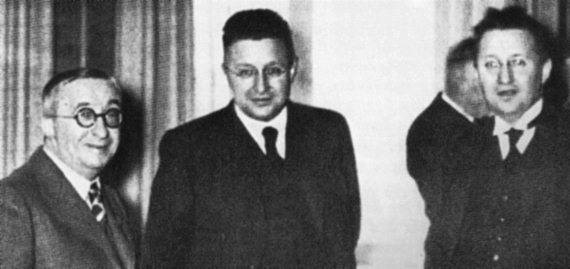
In general, the twin brothers Siegfried and Walter Gunther (pictured with Ernst Heinkel) did a good job. The first of them was engaged in calculations, and the second - the general layout of the aircraft.
They created a completely modern all-metal freestanding monoplane with smooth skin, closed cabs and retractable landing gear. With a very voluminous fuselage, which is useful for both a bomb and a passenger plane.
The wing, so recognizable, the Gunters simply borrowed from the high-speed passenger aircraft of its own design He.70.
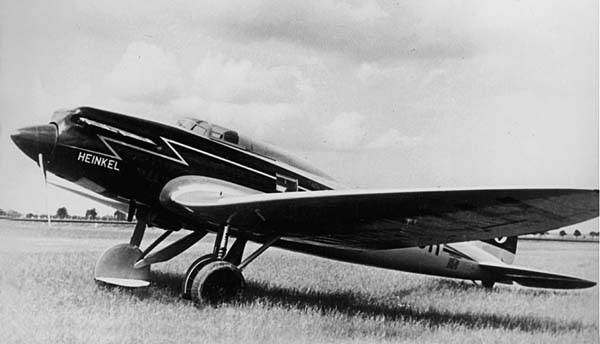
That's what was sad in Germany in those years, so it was with engines. Something like in the USSR of those times, and possibly worse. There were no own engines, more powerful than 750 hp. The gunters chose BMW VI.60Z engines with 690 horsepower. This was the minimum for the bomber to fly at least somehow.
In the military version of the aircraft, a narrow elongated nose ended with a glazed cockpit of the navigator-bombardier. There was a slot for the 7,9-mm machine gun in the cockpit glazing. The same machine gun was planned to be installed in an open top mount. The third machine gun was mounted in a cabin-tower that was pulled down.
Bombs were placed vertically in cassettes inside the fuselage. The maximum load consisted of eight bombs per 100 kg. According to the assignment, the military version of the aircraft was designed for a crew of four: pilot, navigator, scorer, radio operator and gunner.
In the civilian version, the aircraft could carry ten passengers in two cabins: four in the former bomb bay and six in the cockpit behind the wing. Baggage and mail were placed in the trunk, arranged in place of the navigator’s cabin. In the passenger modification, the nose of the fuselage was not glazed.
It was this aircraft that received the designation He.111.
Heinkel received orders for both military and civilian aircraft. The main option for the new aircraft was considered military.
A few words about the most important difference. About weapons.
Defensive armament, as mentioned above, consisted of three MG.7,9 15-mm machine guns, standing in a glazed nose, upper turret and a turret pushed down.
MG.15 fed on cartridges from the store, the fired cartridges were dropped into a bag attached to the machine gun. The navigator fired from a nasal machine gun. The barrel moved left and right in a narrow gap covered by a shield from blowing. The upper firing point was open, only in front of the arrow closed the wind visor from the oncoming flow. Down-back shelling was provided by a lower retractable tower, open at the rear. In a fighting position, she with the shooter seated inside went down.
Naturally, as soon as the plane went into series, modernizations and improvements began, to which the Germans were great masters.
Already with the second modification of the B-2, DB 600CG engines with increased supercharging (maximum power - 950 hp) appeared on the aircraft, which had improved altitude characteristics. The radiator was placed in the protrusion, ennobled aerodynamics and placed additional radiators under the wing leading edge.
All this allowed to bring the maximum speed to 370 km / h, which the military definitely liked and the first four copies of the B-2 were sent to Spain for testing in combat conditions.
Ne.111In the first received the bomber group II / KG 152. For comparison, nine He.111В and nine Do.17Е were handed over to her. Heinkel pilots liked it. He was unhurried and not very maneuverable, but was distinguished by good controllability, ease of takeoff and landing.
In the meantime, in the units they mastered and got used to He.111В, the next version was prepared at the company, D.
In the middle of the 1937, Walter Gunther, having lost his brother, single-handedly continued to work on the aircraft. He suggested changing the shape of the bow, abandoning the traditional ledge between the visor of the pilot's cabin and the cockpit located below.
Now the places of the pilot and navigator-scorer were nearby. The navigator had a folding seat to the right of the pilot; when firing, he moved to a box in the very nose of the car. The abundantly glazed nose of the fuselage had smooth contours and ended in front of the Ikaria ball machine gun. To prevent the navigator lying on the machine gun from obscuring the pilot, the installation was shifted to the right.
So Heinkel acquired its original, but somewhat asymmetrical (I would say - crooked) silhouette.
Here there was an incident, from which the German engineers came out, from my point of view, just great.
With this new layout, the glass was very far from the pilot's eyes, and since it had such a slight bend, tilt and curvature, this instantly created problems with the visibility of the pilot, especially in bad weather. Having thrust a couple of planes into the ground during the tests, the Germans realized that something had gone wrong ...
They found a way out, but to say that it was extremely original is to say nothing at all!
If necessary, the pilot’s seat together (!!!) with the controls, the hydraulic actuator rose up, and the pilot’s head protruded outward through the sliding sunroof in the glazing. And the pilot could turn his tower in all directions.
A small hinged visor covered his head from the oncoming stream. The most interesting thing is that in this position the pilot could be infinitely long or until everything freezes itself. Even the main dashboard was located on the ceiling of the cockpit and was clearly visible to the pilot from both positions.
By the way, through the same hatch, the pilot could leave the plane if something happened.
The claims of the representatives of the Luftwaffe were not only to the pilot's place. More precisely, there were no complaints about the place of the navigator-shooter. Unlike other jobs.
The upper shooter was covered from the incoming stream with only a small visor. At speeds above 250 km / h, two problems arose immediately: the air flow blew into the fuselage, and the machine gun barrel could only be turned sideways from the axis of the aircraft with great difficulty.
With a retractable bottom mount, everything was even finer. In the advanced combat position, she created a huge aerodynamic drag, "eating" up to 40 km / h. But this is only half the battle, in general the installation, or as it was also called “Tower C”, simply jammed in the lower position, and here the problems started in full.
The shooter couldn’t always leave her, especially if it stuck in its lowest position, and when landing the uncleaned unit touched the ground, which guaranteed an accident.
It was not very convenient to be in the installation of the shooter, the shooter, open to all the winds, was not only uncomfortable in the cold, but the complete lack of reservation made him a very easy victim of enemy fighters. The statistics on the use of He.111 in Spain testified to almost 60% of the losses of the lower shooters.
Therefore, Walter Gunter developed and installed a fixed ventral gondola, which replaced the retractable installation. She had much less resistance, and the machine gun installation in it was always ready for battle. The shooter was placed in a lying position on the mattress. On board the gondola provided a hatch through which the crew got into the plane.
We also changed the top shooting point. Instead of a small wind visor, a movable half-closed flashlight was introduced. When firing, he manually moved forward, providing a significant field of fire.
On the next series of He.111E aircraft, Jumo 211A-1 engines were installed, which allowed to increase the bomb load to 1700 kg, which in itself was a very good figure. The maximum speed even with overload (2000 kg of bombs) was 390 km / h, which was pretty decent for that time.
In March 1938, the first of the 45 H. 111-1 also went to Spain. It is logical that the aircraft repeated the success of the previous model.
Here, however, a certain role was played by the lack of a worthy fighter resistance among the Republicans. Therefore, a bomber with three machine guns seemed something like that, well armed.
The Luftwaffe command generally decided that the weakly armed, without fighter cover, but relatively fast bombers would be able to continue to carry out their tasks.
After some two years, during the Battle of Britain, the Luftwaffe will pay for these errors with the blood of its pilots in full.
Then a very interesting moment occurred. Based on modification F, the first German wheeled torpedo bomber He.111J was created. The engines were again supplied by Daimler, DB 600CG.
The torpedo bomber turned out to be interesting. Under the center wing, he could hang bombs up to 500 kg, torpedoes LT F5b (765 kg each) or aviation magnetic bottom mines (two each). The internal placement of bombs was not provided.
Several aircraft modified J-1 later equipped as carriers of the planning torpedo L10 Fridenzengel. The planning torpedo was suspended under the fuselage along the axis of the aircraft. In this case, it was possible to take off only from a flat concrete strip, since the clearance from the rudders and propeller torpedoes to the ground was very small.
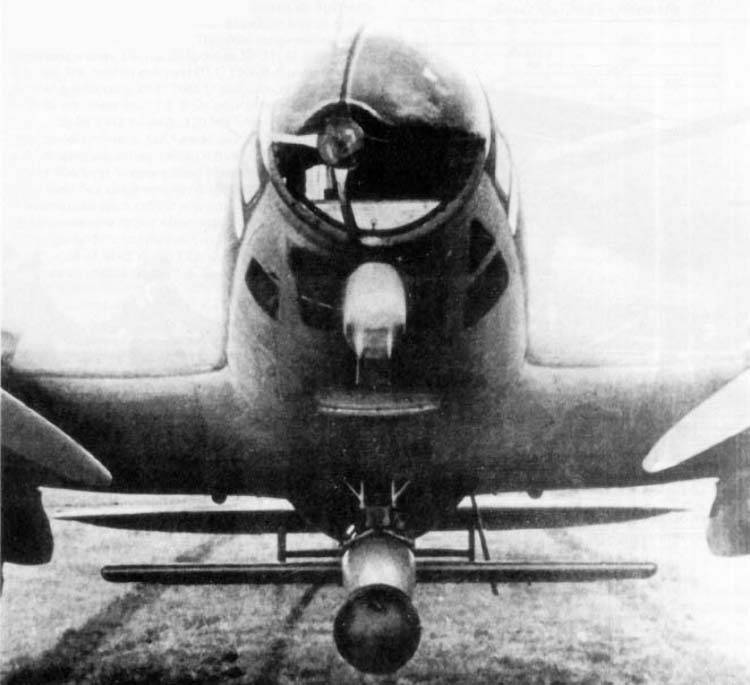
The discharge was carried out from a height of 2500 m, directing the aircraft towards the target. 3 seconds after the discharge, a wire 25 m long was released from the container under the wing. It was part of the height sensor. When the gliding torpedo was at an altitude of 10 m above the water, the pyromechanism fired the torpedo wing and plumage. The torpedo went under water, launched the propellers and, over time, hit the target (or did not hit). After testing in the fall of 1942, Friedenzengel was launched into the series; several hundred were made.
Ne.111J-1 was allegedly even turned into a missile carrier, and he carried an A-4 (V-2) ballistic missile. No visual confirmation found. V-2 weighed almost 13 tons in the starting state, so I doubt that Ne.111 could have pulled it off. Plus the length is more than 10 meters.
But the V-1 "Heinkel" dragged easily. And they launched, however, without much success. The British quickly realized that it was easier to intercept the slow Ne.111 along with the missile on the way and redeem than to chase after the launched “fau”. But more about that below.
They also made a number of minesweepers, equipping the aircraft with a device for cutting aerostat cables. The frame formed a triangle with slightly convex sides. The cable slid along the frame to the end of the wing and fell on the electric knives that cut it.
The frame and its fasteners, together with the knives, created an additional weight of approximately 250 kg, which greatly shifted the alignment forward. To compensate, a ballast was placed in the rear of the bomber. A total of about 30 machines were made, but the weight of the frame and ballast forced to reduce the bomb load and worsened flight data. Therefore, after several operations on England, the surviving planes were converted into glider tugs.
In general, Ne.111 has become a kind of laboratory for testing new species weapons. In 1942, it was at He.111 that the FX 1400 ("Fritz X") radio-controlled bomb was tested.
Several Ne.111H-6 equipped with transmitters from the FuG 203 Kael control system were used to test the FX 1400 in Foggia (Northern Italy).
Despite some successes, the Heinkel proved to be completely unsuitable as a carrier of such weapons and therefore could not be used in combat situations.
Other Ne.111 equipped with FuG 103 radio altimeters were used for test discharges of the BV 246 Hagelkorn gliding bombs. The tests of the previously mentioned L10 Fridenzengel torpedoes were also tested.
But all these exotic types of weapons on He.111 were only tested, before the use in battle in one case it did not come to pass. Except, as already mentioned, "Fau-Xnumx."
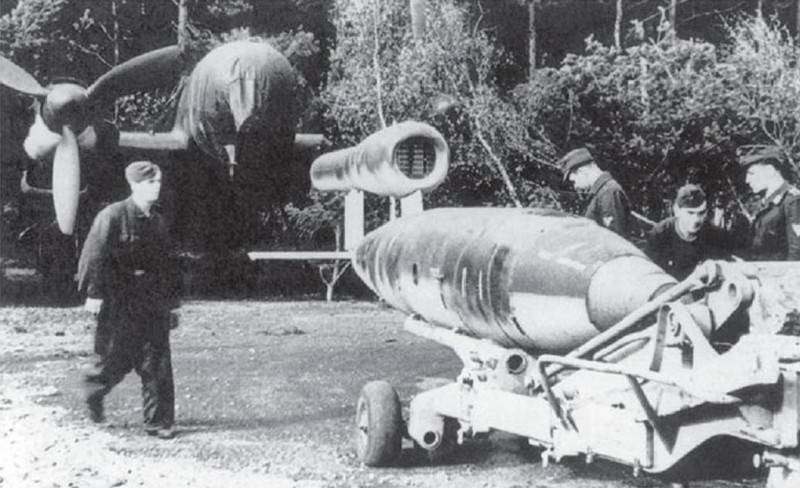
In 1943-44, it was experimentally found that He.111 is quite capable of carrying and launching in flight a projectile (or cruise missile with a pulsating jet engine) Fi.103 (aka FZG 76 and VI, V-1 / "Fow-Xnumx"). The total weight of the device in the refueled state was 1 kg, so even with the overload, the 2180 could take the Fau.
Initially, they wanted to fix the Fau on racks above the fuselage. After starting the rocket engine (it was made by an electric fuse from the side of the carrier), it had to unhook, and the bomber went down with a gentle dive so that there would be no collision.
However, the option did not work, “Fau” after uncoupling, without gaining speed, fell down, and Ne.111 was absolutely not the plane that could easily dodge.
Then another scheme was used. The bomber carried a rocket under the root of the wing, asymmetrically - to the right or left, so that the engine mounted above the keel “Fau”, was parallel to the fuselage of the carrier.
In general, such a shell mount significantly impaired weight distribution and complicated piloting. Naturally, the speed also fell, which was already quite unpleasant.
But the launch from the side of the aircraft had its advantages. Yes, ground-based launchers were fired much more accurately, the then reference and orientation systems in space were very simple and unpretentious. But ground installations unmasked themselves, they were constantly hunted by enemy reconnaissance, they were constantly bombed and fired at allied aircraft.
A launch from the air allowed to attack where the air defense system was not perfect.
The first combat flight of Ne.111 with Fau was made on 8 on July, firing several missiles at Southampton. Until the end of 1944, approximately 300 Fi.103 in London, 90 in Southampton, and 20 in Gloucester were released from the carrier aircraft.
Efficiency was pretty low. For example, 15 September 1944 g. Against London flew 15 Ne.111Н. Only nine Fau were successfully dropped, two of them reached the target, the rest fell into the sea due to failures or were shot down by British fighters.
However, these operations were very dangerous, and KG 53, engaged in launches, suffered heavy losses. For example, the 11 / KG 53 group lost two 12 airplanes in two flights as a result of shell explosions at the time of carrier take-off. Combat missions with missiles ceased on 14 on January 1945. For the entire period of launches, the Germans lost 77 aircraft, of which approximately 30 were lost when separating missiles from carriers. A total of 1200 shells went to the British Isles.
Here's a story application. This is in addition to the usual bombing and torpedo launches, what the 111 did throughout the war, from the first to its last day.
Despite the large number of minuses, the plane was loved by pilots. Excellent visibility from the cockpit, reliability, good stability and controllability in all flight modes. I would like to say a few words about the reservation.
The armor protection of the 111 looked very serious. The pilot made armored steel cup (thickness 5 mm) and back (10 mm) seats. Under the position of the navigator (both in a sitting and lying position) was an armor strip with a thickness of 5 mm. In front of the upper shooter in the visor of the lamp was placed bulletproof glass 60 mm thick. Behind the cabin of the shooters were covered three plates of 8 mm, forming a fuselage partition. In a gondola, armor plates with a thickness of 6 mm covered the sides and bottom, including the entrance hatch. From bullets flying from the area above and behind the aircraft, a sheet in 8 mm protected the gondola. The oil cooler tunnel covered the steel sheet in 6 mm from above, and the 8-mm damper was located at the outlet.
Add to that the survivability measures that German designers introduced earlier. The walls of the fiber tanks were easily pierced by a bullet, but the fiber was not bent by the petals, like a duralumin, preventing the tread from tightening the hole. The Germans' tread was of excellent quality, all gasoline and oil tanks were protected, including additional ones mounted in the bomb bay instead of cartridges.
Excellent (as the Luftwaffe pilots wrote in their memoirs), the fire system worked.
Management was implemented using hard rods. Yes, it gave extra weight, and considerable, but to break the draft was much more difficult than the cable.
In principle, the only useful thing that the Germans did not have was a system for filling gas tanks with exhaust exhaust gases. But this was generally our invention.
The release of Non-111 in Germany was completed in the fall of 1944. The data on the total result for various sources do not coincide. They diverge from 6500 to 7300 and even 7700 aircraft. Since the aircraft were made not only in Germany, it is very difficult to say how many Ne.111 were actually released.
Heinkel Ne.111 was produced in more than 70 variants and modifications, but alas, the efficiency of the aircraft gradually began to decline.
But why then the command of the Luftwaffe did not remove the aircraft from production for the sake of new models?
I think that the point is precisely in the reluctance to lose the established production of well-established aircraft. The fact that an increase in engine power took away an increase in armor and armament did not improve performance. But no one wanted to allow a drop in the production of combat aircraft.
In addition, in addition to bombing and torpedo bombing, He.111 performed a very wide range of combat missions. Landing, transport operations, towing gliders, launching planning bombs and aircraft-shells.
And here, high speed, as it were, was not required, because Ne.111 so calmly fought until the very end of the war. Although, of course, the closer to the end of the war, the harder it was to use it, despite the constantly increasing armor and defensive weapons.
Ne.111 became, albeit not an easy one, but a victim for allied fighters.
LTX He.111H-16
Wingspan, m: 22,60
Length, m: 16,60
Height, m: 4,00
Wing area, м2: 87,70
Weight, kg
- empty aircraft: 8 690
- normal takeoff: 14 000
Engines: 2 x Junkers Jumo-211f-2 x 1350 hp
Maximum speed km / h
- by the ground: 360
- at height: 430
Cruising speed, km / h
- by the ground: 310
- at height: 370
Combat range, km: 2 000
Maximum rate of climb, m / min: 240
Practical ceiling, m: 8 500
Crew, prs: 5
Armament:
- one 20-mm MG-FF gun in the nose (sometimes another 7.9-mm MG-15 machine gun);
- one 13-mm machine gun MG-131 in the upper installation;
- Two 7,92-mm machine gun MG-81 in the rear of the lower gondola;
- one MG-15 or MG-81 or a pair of MG-81 in the side windows;
- 32 x 50-kg, or 8 x 250-kg, or 16 x 50-kg + 1 x 1 000-kg bombs on the external holder, or 1 x 2 000-kg + 1 x 1000-kg on external holders.
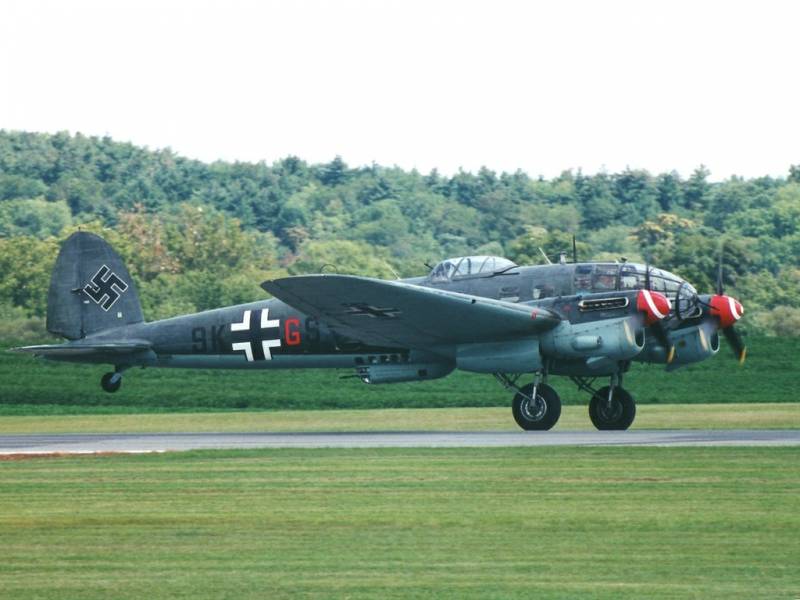
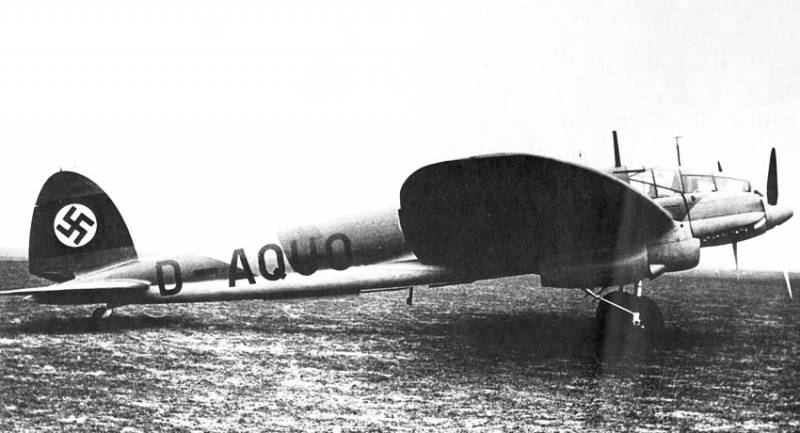
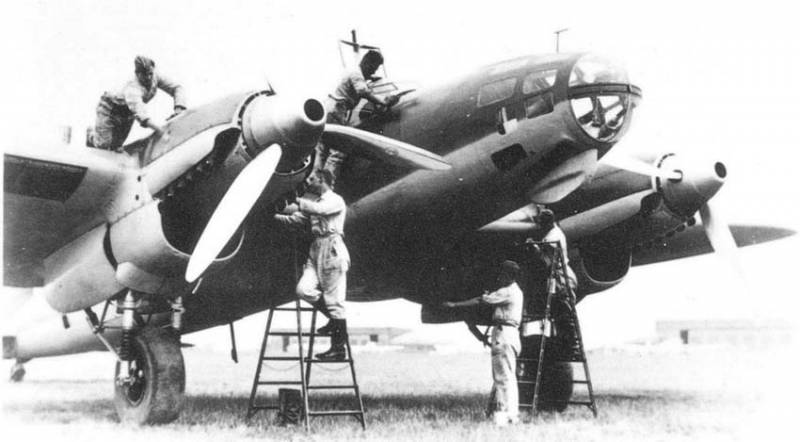
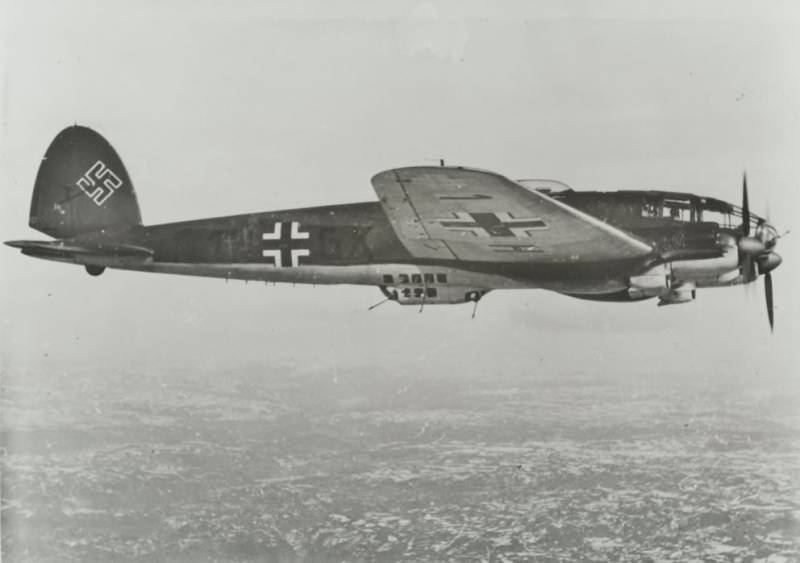
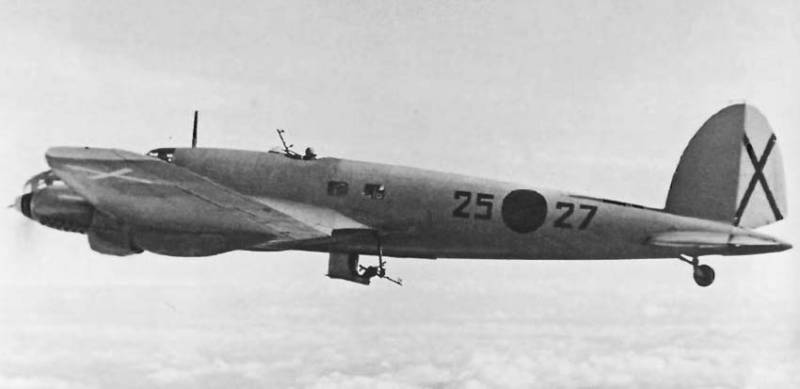
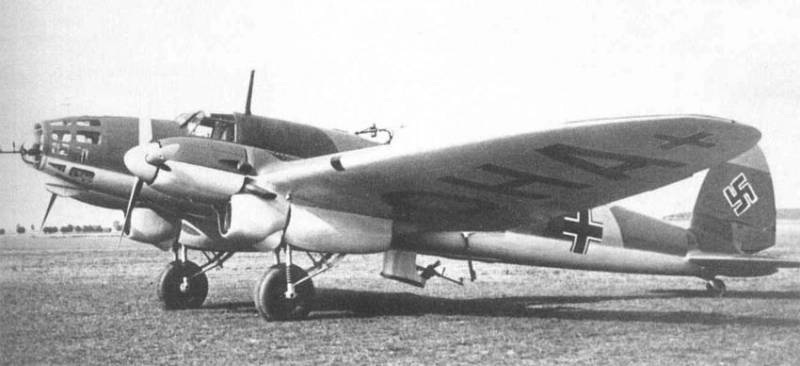
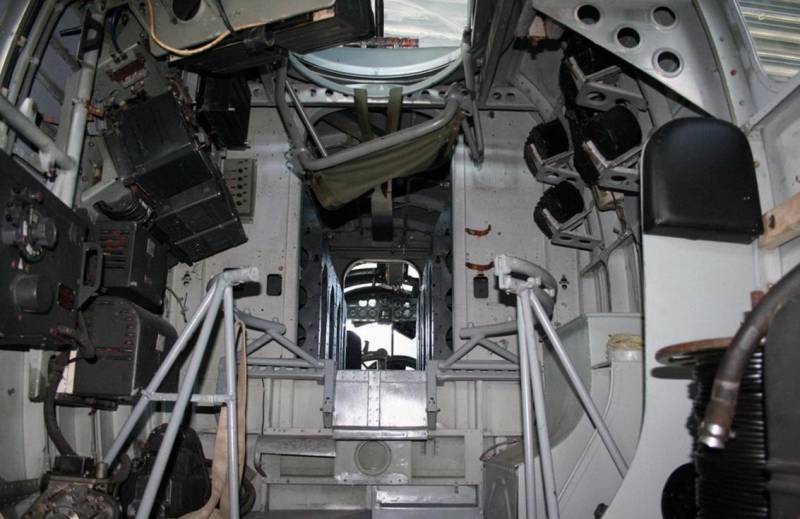
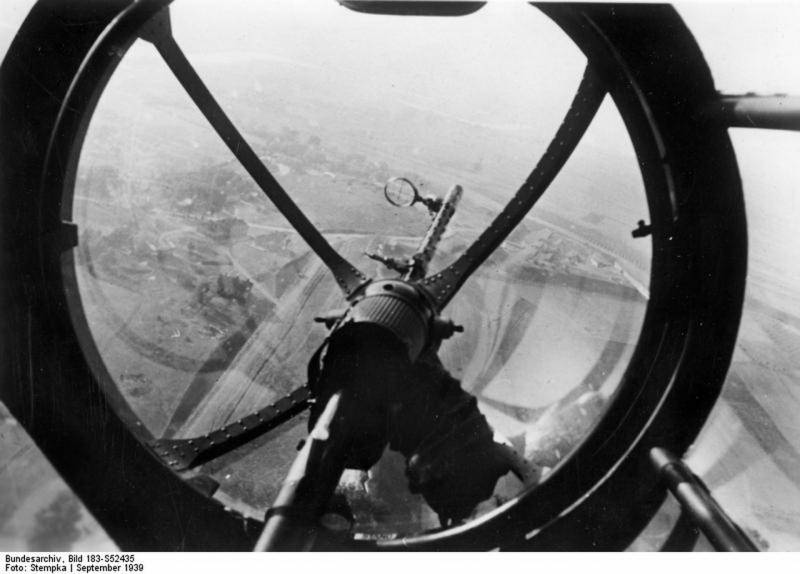
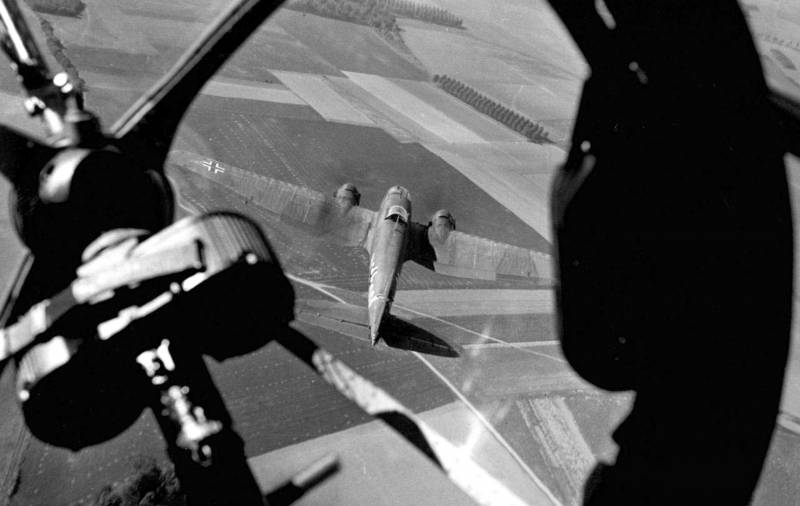
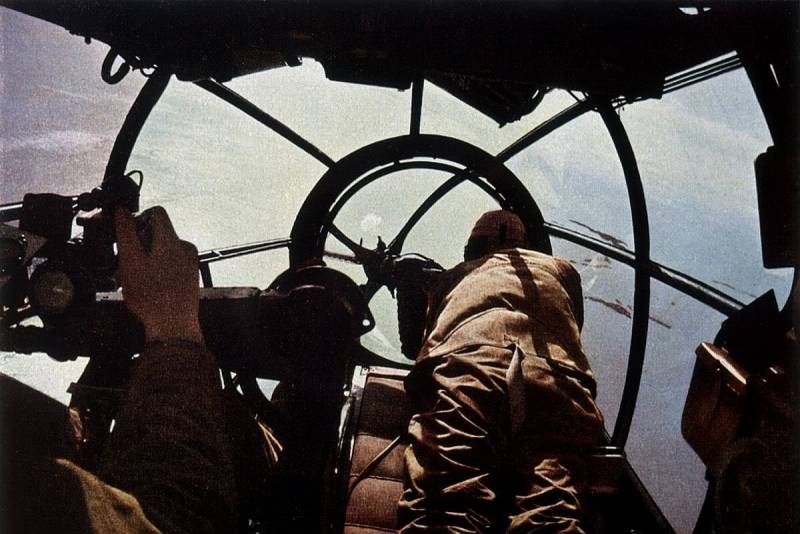
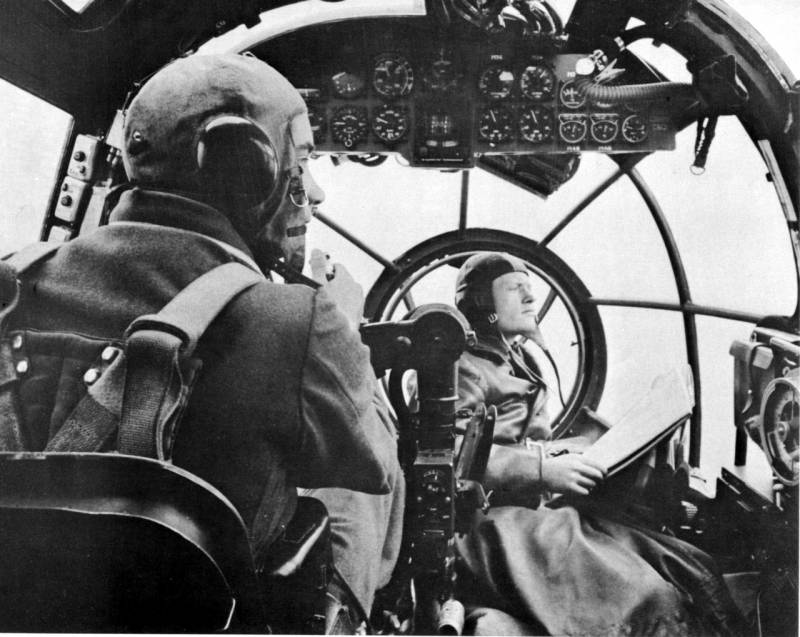
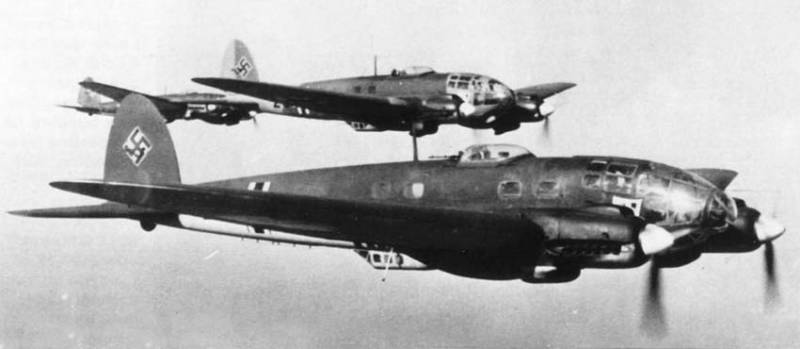
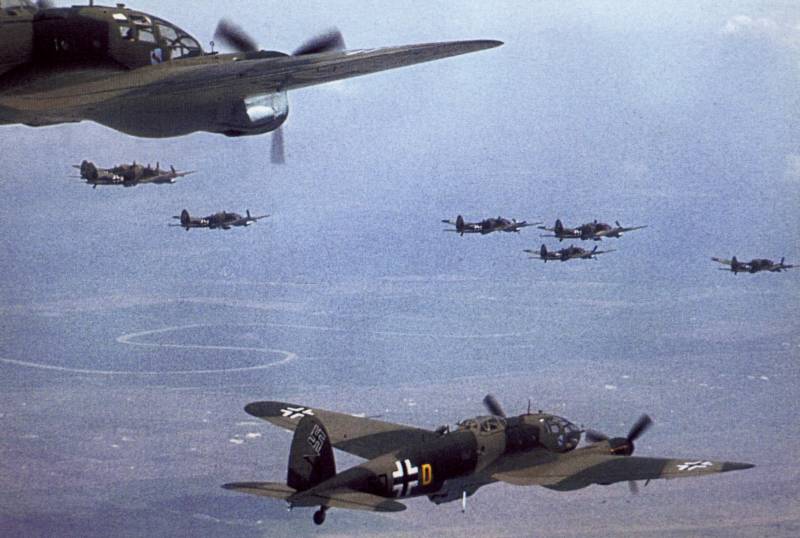
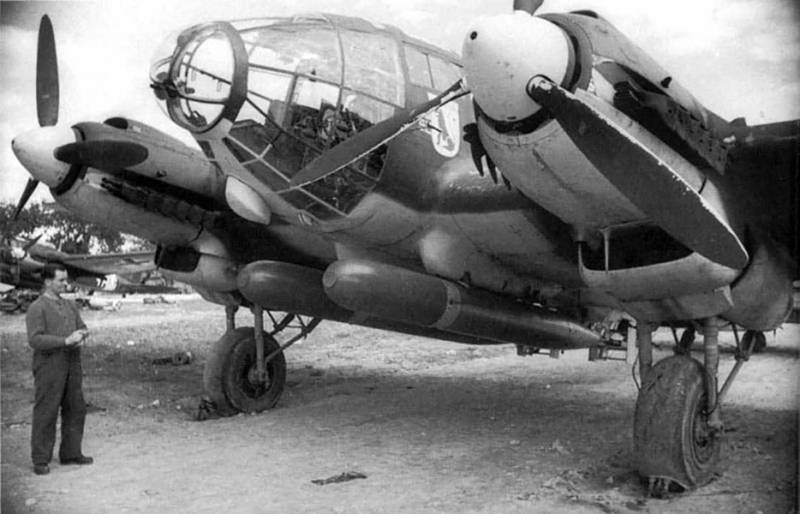
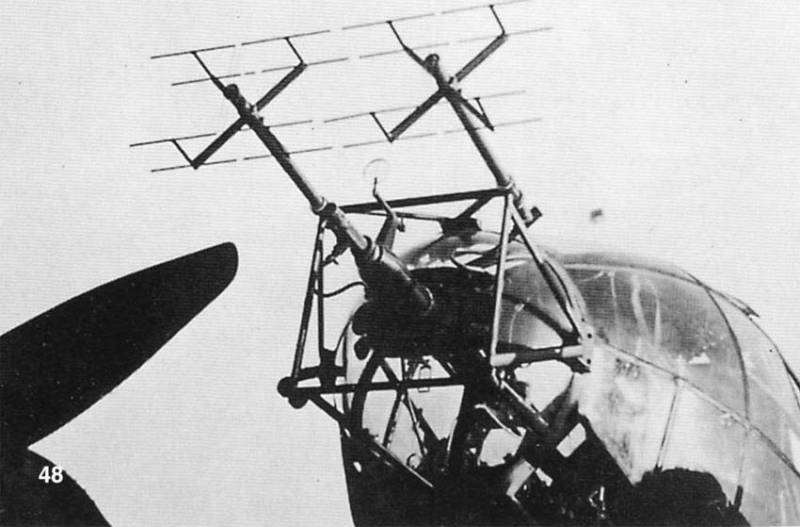
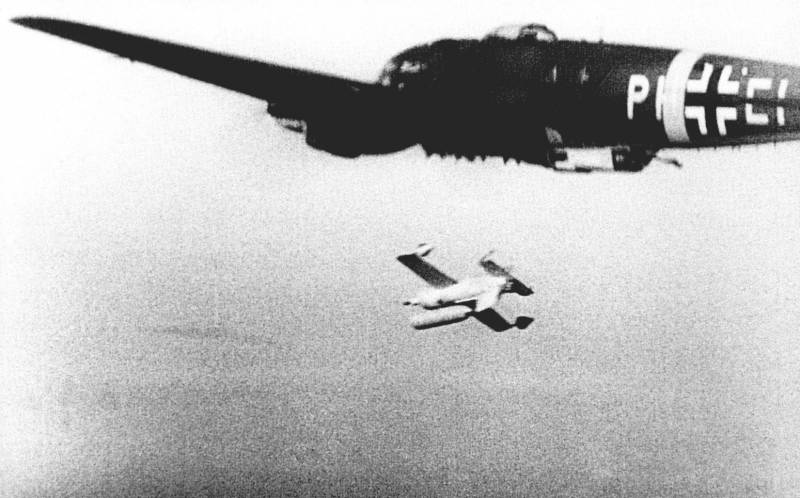
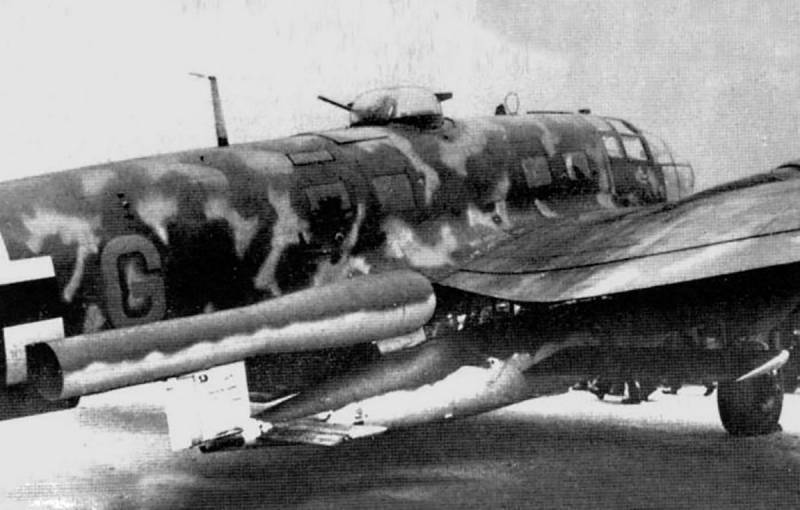
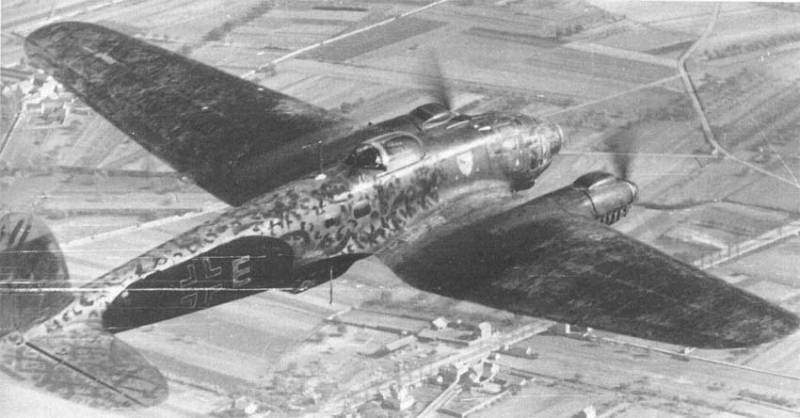
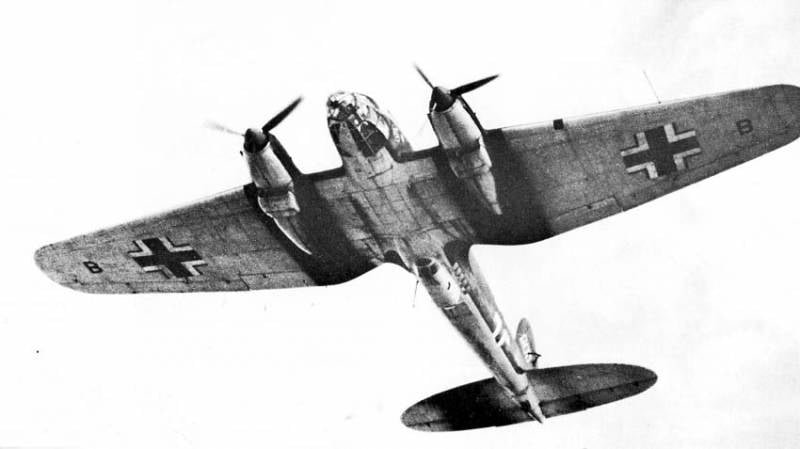
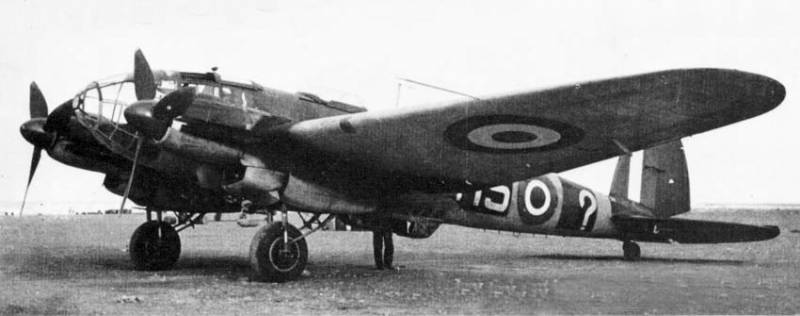
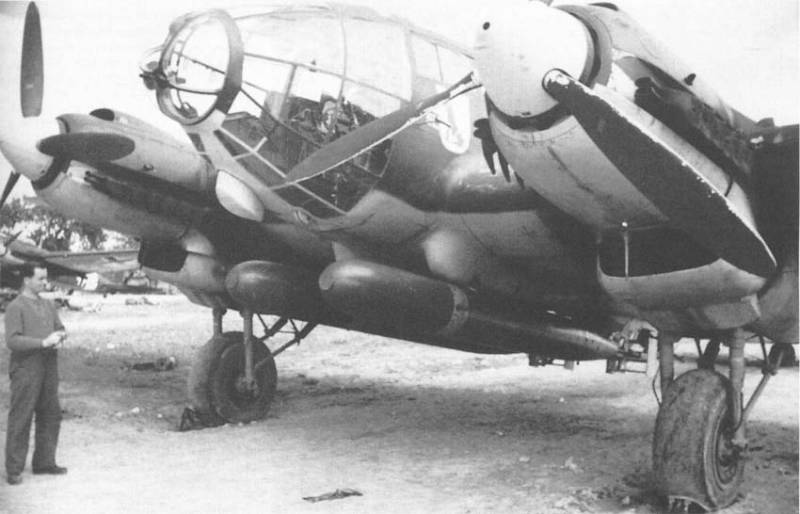
Information